Are dogs better mountain bikers than humans?
Dwight Holovach, now living in Upper Saddle River, has been coming to Tenafly Bicycle Workshop since he first moved to Tenafly in 1999. Dwight has been a loyal customer through 4 ownership changes and has seen the shop grow through various stages of our existence. Though at first a BMX rider, he migrated to mountain biking 25 years ago and has remained one ever since. Dwight’s happy disposition stems from a secret that he found in 2004 when he first introduced his young dog Dakota (a Viszla breed) to the sport of mountain biking.
While growing up on Long Island, Dwight was always around animals, and he got his first dog when he was a teenager. Like his love for bikes, his love for animals grew as he became an adult, and when Dakota’s hips were developed enough, he decided to merge the two activities into one and take Dakota out onto the trails. He looks back on his first adventure as being a life-changing experience. The maiden voyage took place in Saratoga Springs on the trails next to Skidmore College. Not knowing how it would turn out, he and Dakota put in a solid ride and the excitement for both of them was through the roof. He reflects jokingly, “Dakota was so exhausted and panting so hard on the drive home, I thought I was gonna have to call my wife to tell her I killed the dog”.
From this first adventure, Dwight and Dakota became dedicated riding buddies; so much so that Dwight couldn’t slip into his bike shorts and jersey without Dakota getting excited. In 2017, Dwight added a riding partner to the group and got Hunter, a Rhodesian Ridgeback. Dwight admits that he had some anxiety about bringing Hunter out for his first ride, not knowing how he would react or whether he might take off and chase a deer. However, Dwight was psyched to find out that Hunter quickly became Dakota’s riding apprentice and learned proper riding behavior from his older mentor. He realized that 2 dogs were the perfect number for his mountain bike rides and watched as they developed their own style of riding. In 2019, Dakota passed away at the age of 16. Interestingly, the average life span of a Vizsla is 12-15 years, and Dwight attributes Dakota’s longer life span to his outdoor activity and overall generally healthy lifestyle filled with multiple bike rides a week as well as hikes and long walks. Dwight added Big Sky (A.K.A. Sky), another Vizsla after Dakota’s passing, and again, he had some nervousness on his first ride with the two dogs. He witnessed similar tutelage with Hunter and Sky in terms of learning the ropes of mountain biking as he did with Dakota and Hunter. Hunter showed Sky how to behave, how to find a good line in the technical trail sections, how to keep close to Dwight, and how to make sure that he was okay.

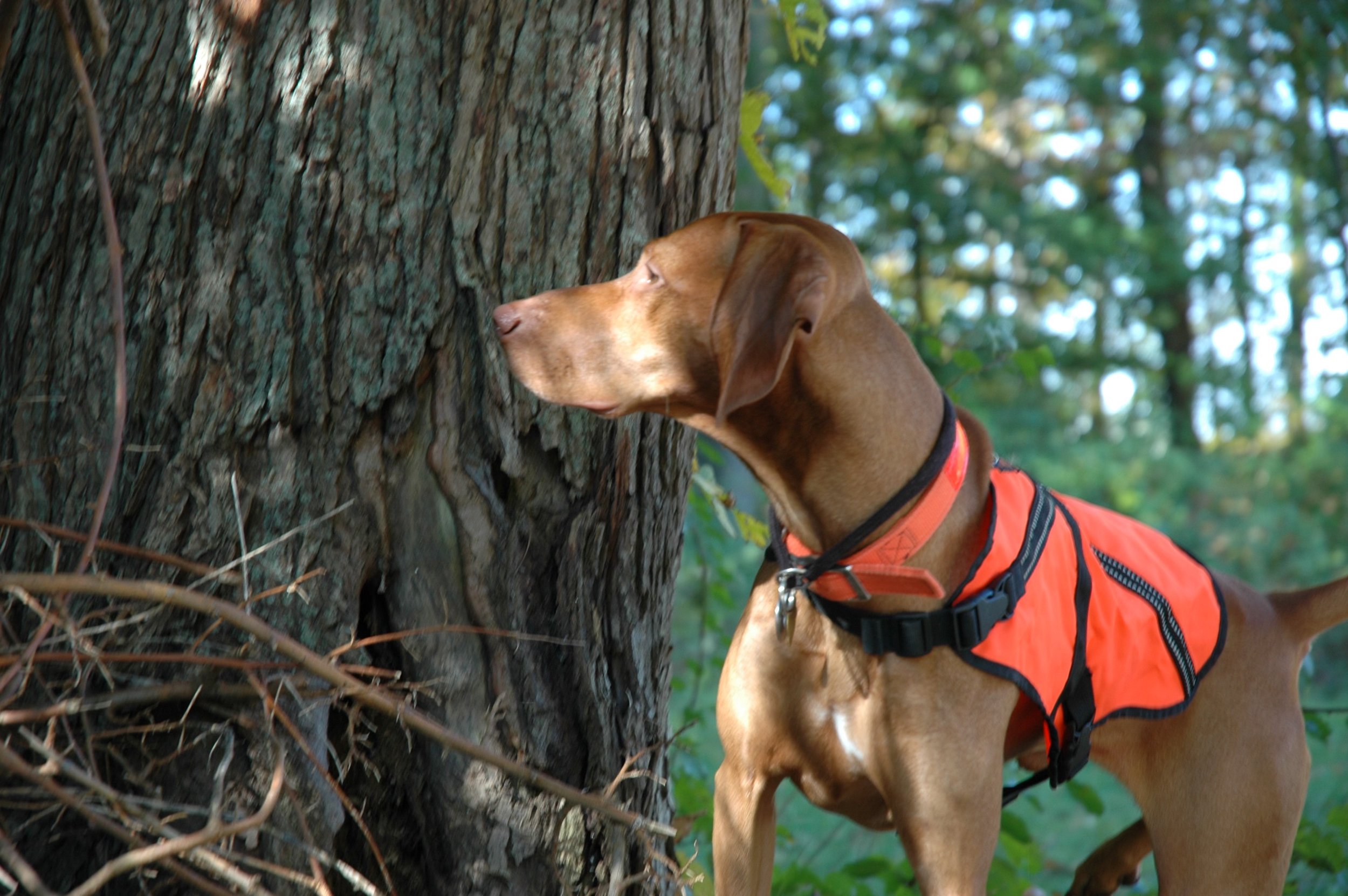
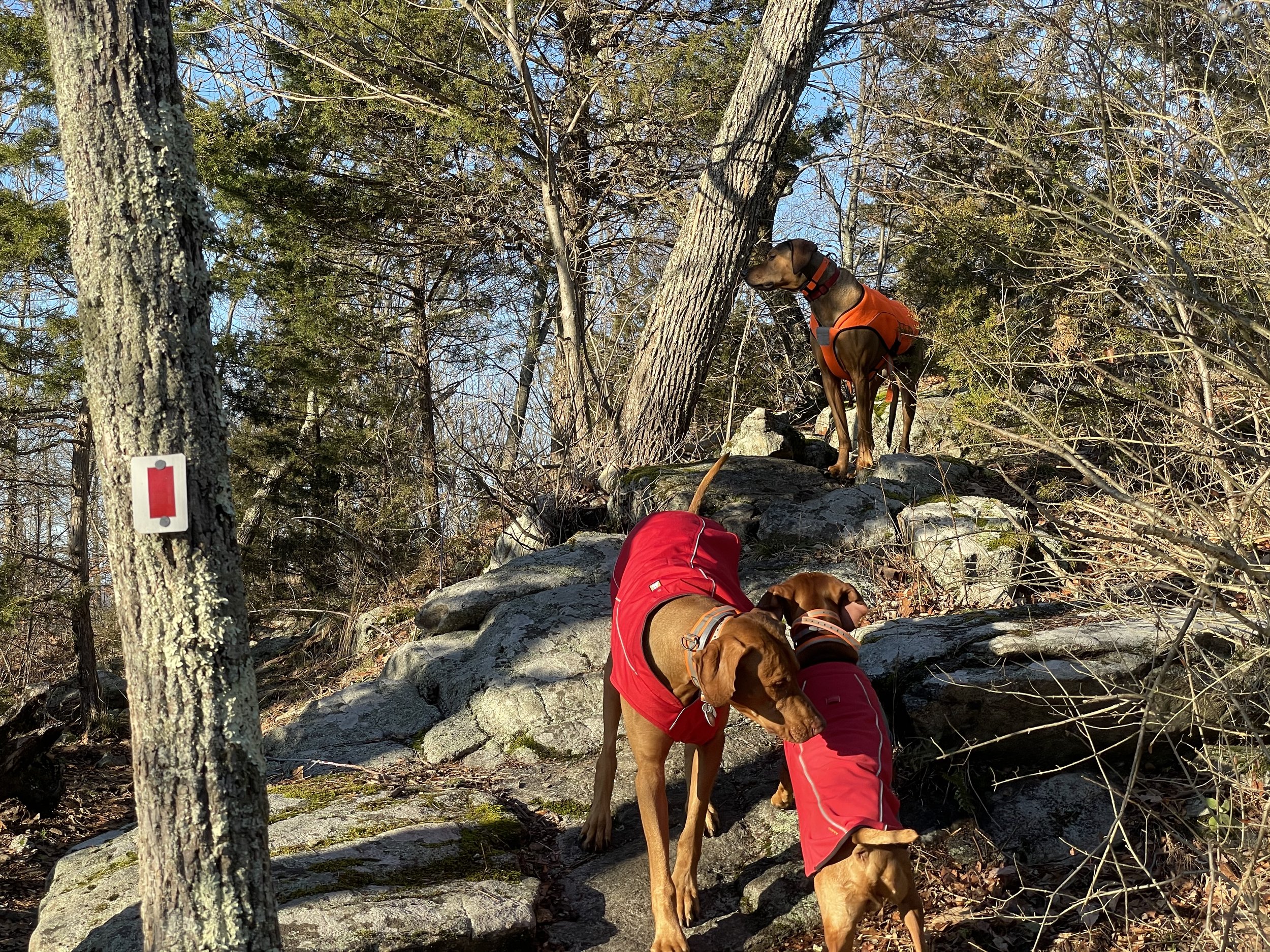

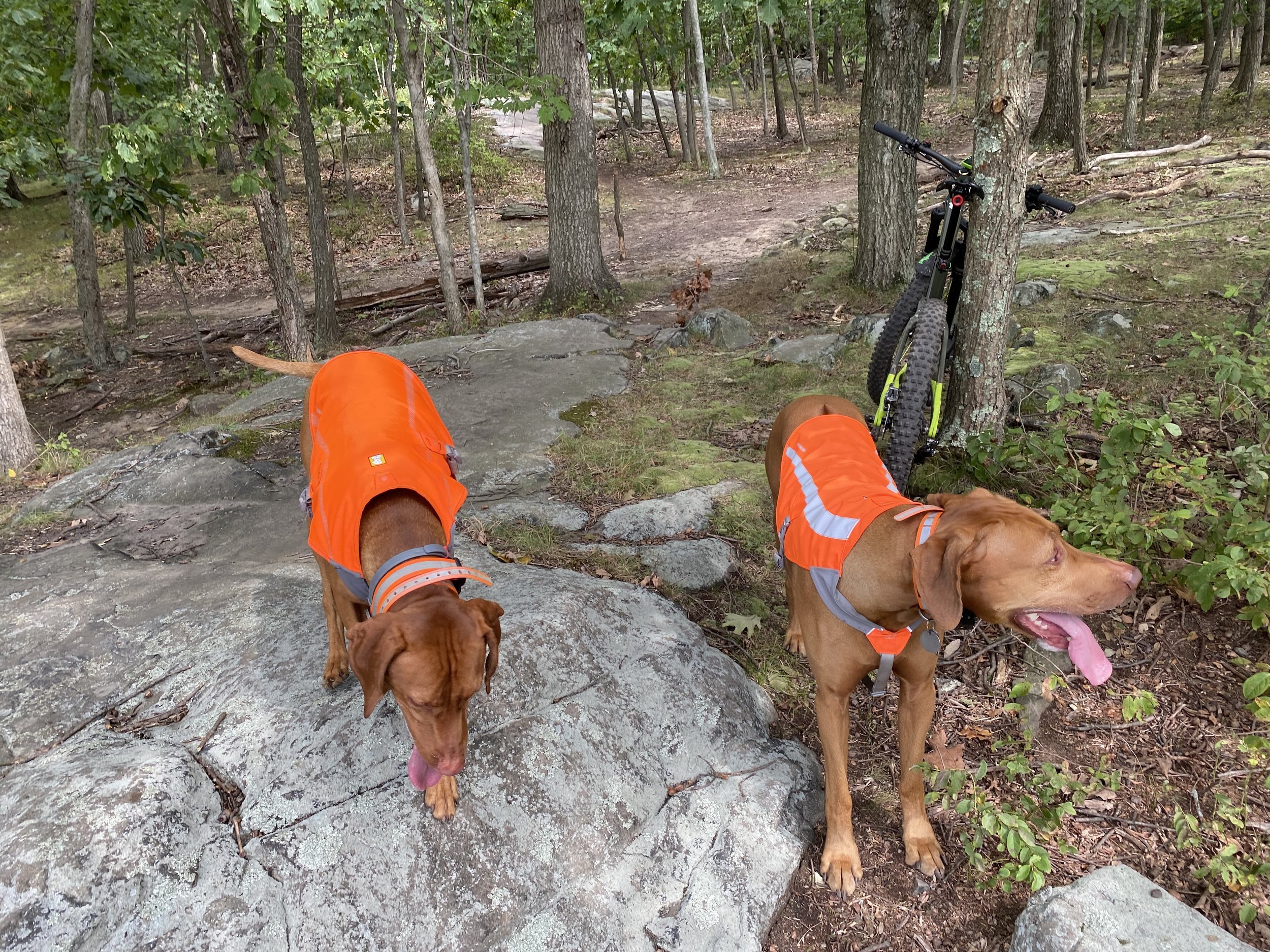
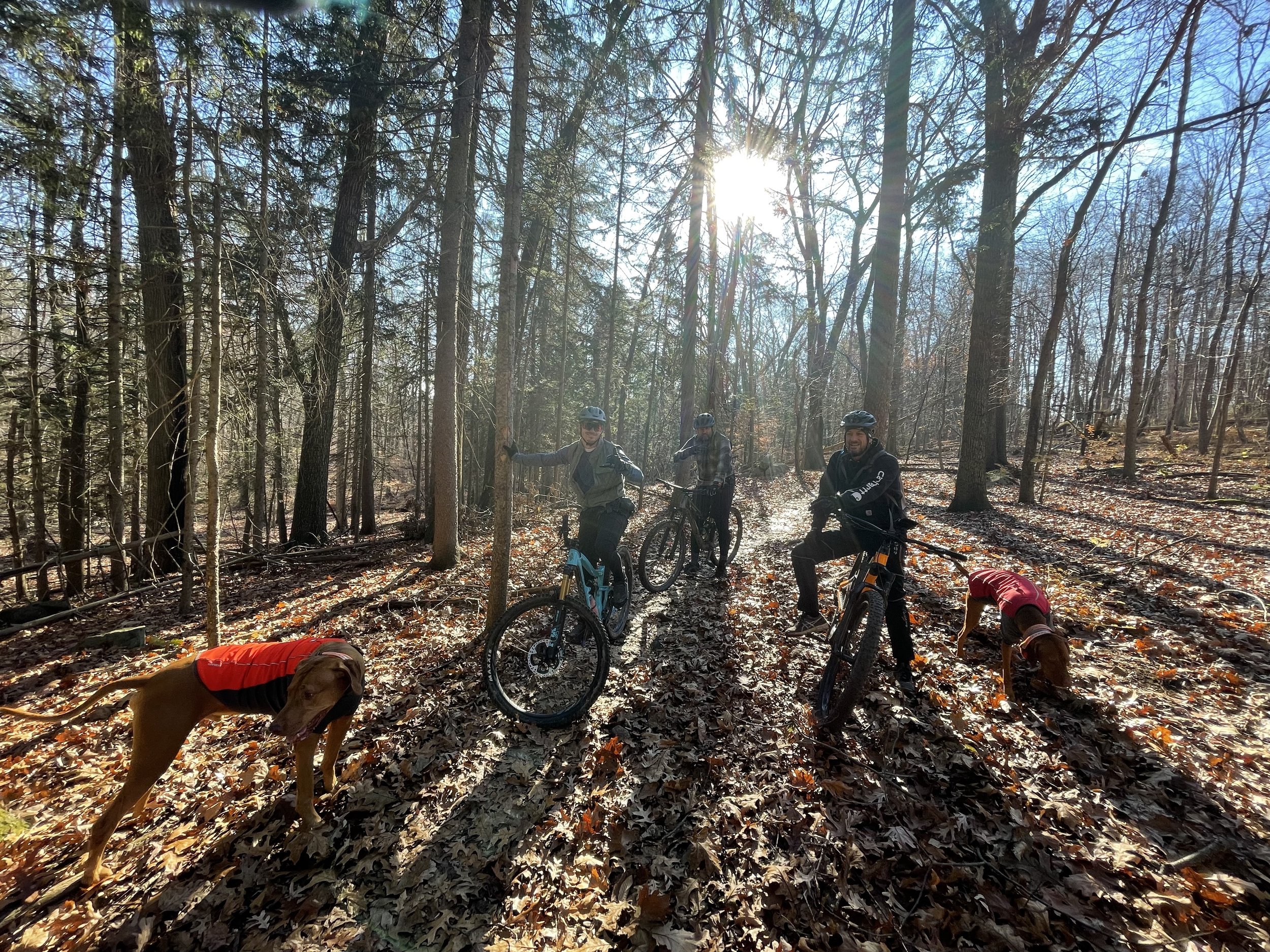
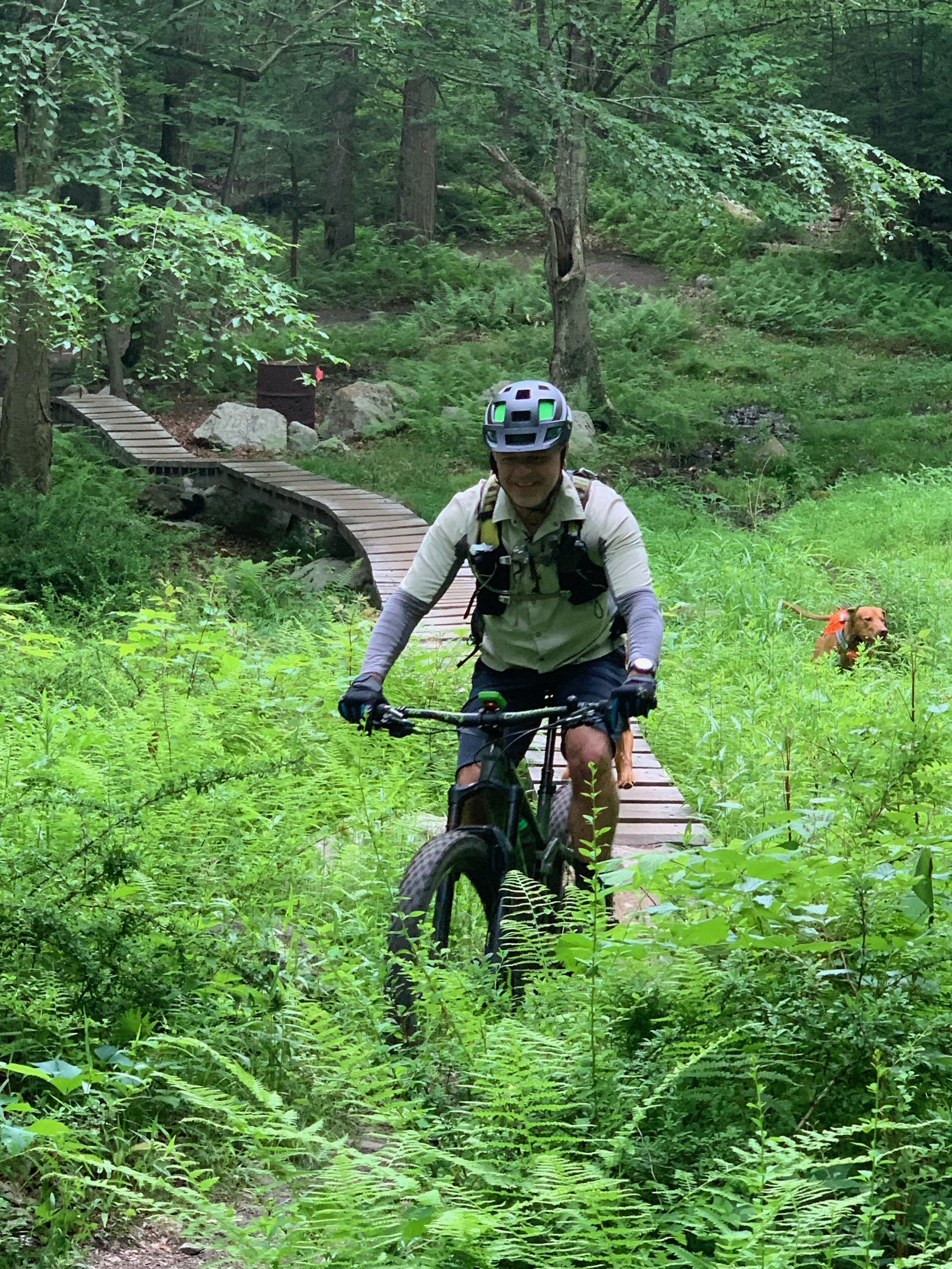
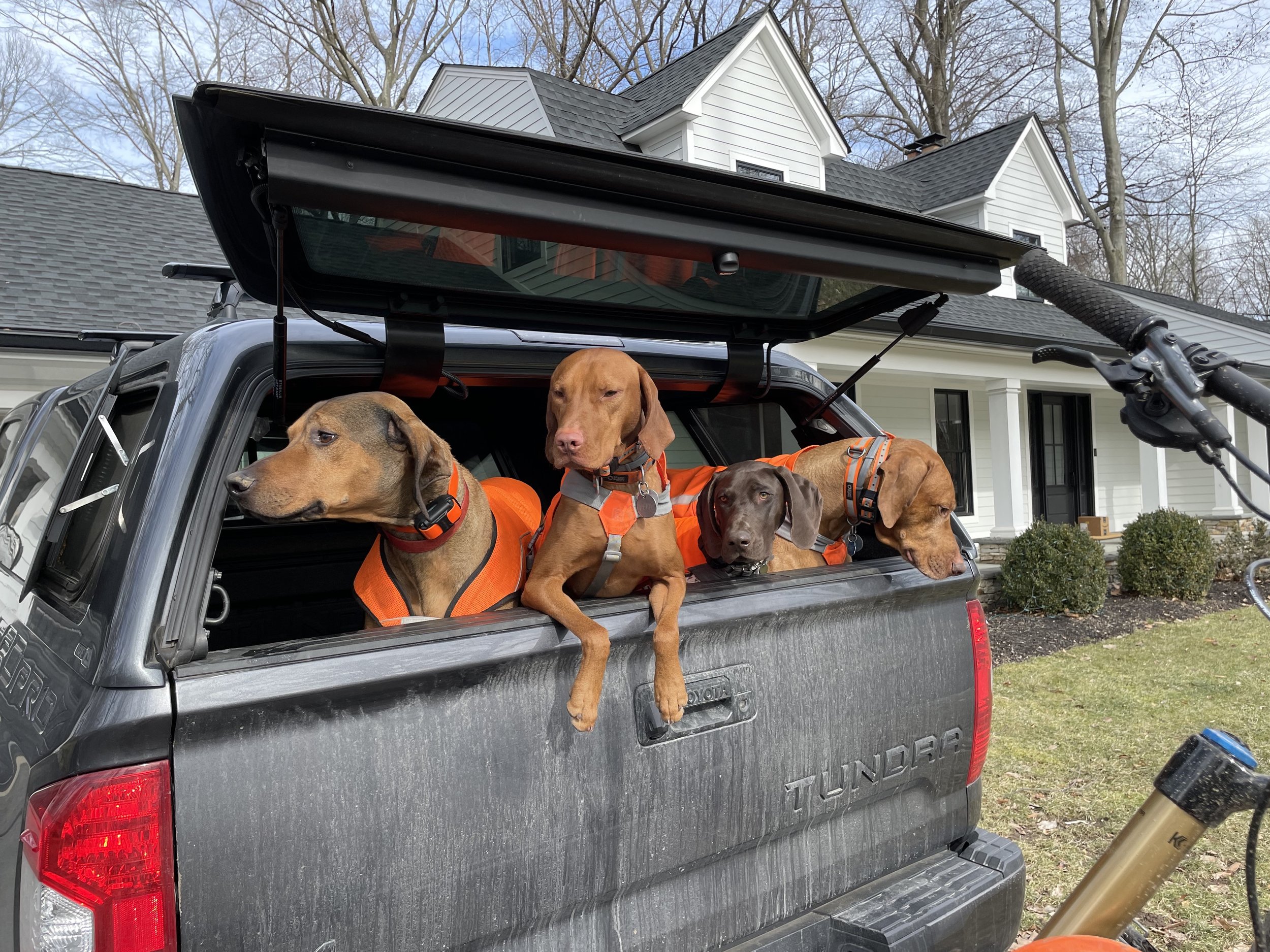
When I asked Dwight what his favorite adventure was or if there was ever a defining moment that he had when riding with his dogs, he explained that other than their first rides together, “Every ride is awesome”. The dogs are extremely excited every time he gets ready to ride, and they will both cry if he tries to sneak out without them on the rare occasion when he wants to go solo or it’s too hot to take them. “Riding isn’t the same experience without them,” he says. For Dwight, mountain biking has become synonymous with being with his dogs. As for other trail users that they see on their rides, there is rarely conflict with them because the dogs are so well-behaved. He almost always gets a positive reaction when he stops to chat with other hikers, riders, and fellow dog owners. Dwight always calls his dog and has a leash with him if a situation arises where there may be trouble. The overall stoke is high out on the trail with Dwight and his dogs. Since the popularity of mountain biking has grown recently, he often brings Hunter and Sky on group rides with his friends, some of them new to mountain biking. The dogs offer camaraderie to him and his friends, and he considers them to be “part of the group”. When asking Dwight if the dogs ever impede him and his other buddies on the trail, he said that it does not happen often. “They flow with me,” and “They can do features that I have to walk,” he muses. In fact, Hunter and Sky sense the riding conditions based on the sounds of Dwight’s bike, his speed, and his body language. “When I downshift before a descent, they know to speed up”. In return, he watches them to know if there’s another trail user, dog, or deer on the trail or nearby. Both rider and dogs feed off of each other’s behavior, and it enhances the experience for them all. In addition, they have even developed their own riding styles. Dwight says, “Hunter will drift a little, while Sky stays by my side”.
So, back to the title question: “Are dogs better mountain bikers than humans?” In Hunter and Sky’s case, the answer is most definitely yes. These dogs have more stoke to ride than most humans. They always want to ride, and they are often excited to ride even when Dwight is dragging after working all day. They are courteous to other trail users and never create conflict. They are athletic and are able to clear obstacles and trail features that humans sometimes can’t. They have their own riding styles and flow differently from each other; they have “Steez”. They leave next to no trace behind and have less impact on nature than humans. And most importantly, they bring stoke to those around them, especially Dwight, who will ride with his trail dogs until his legs will stop spinning in circles.

